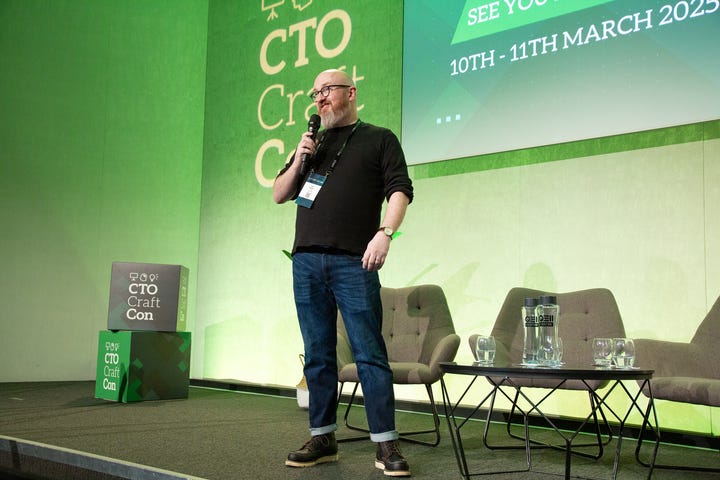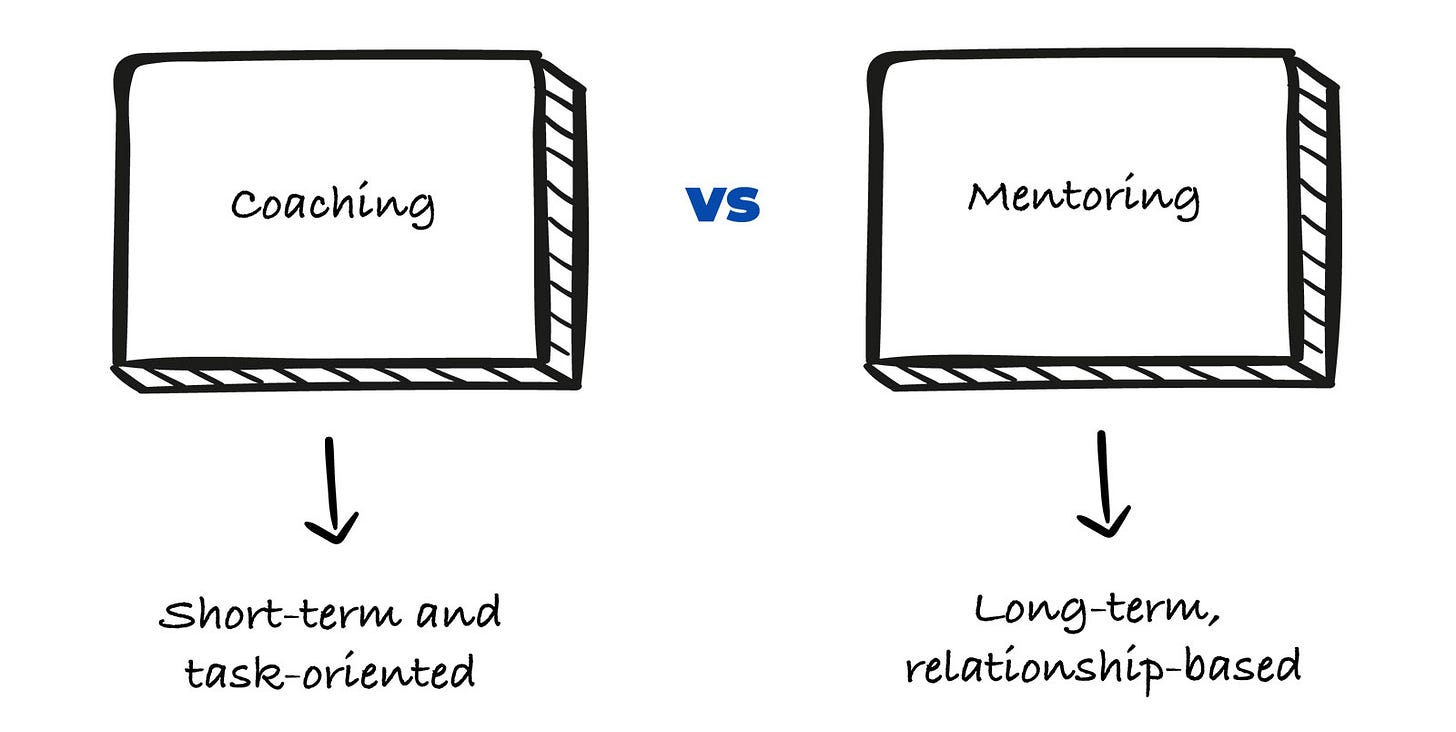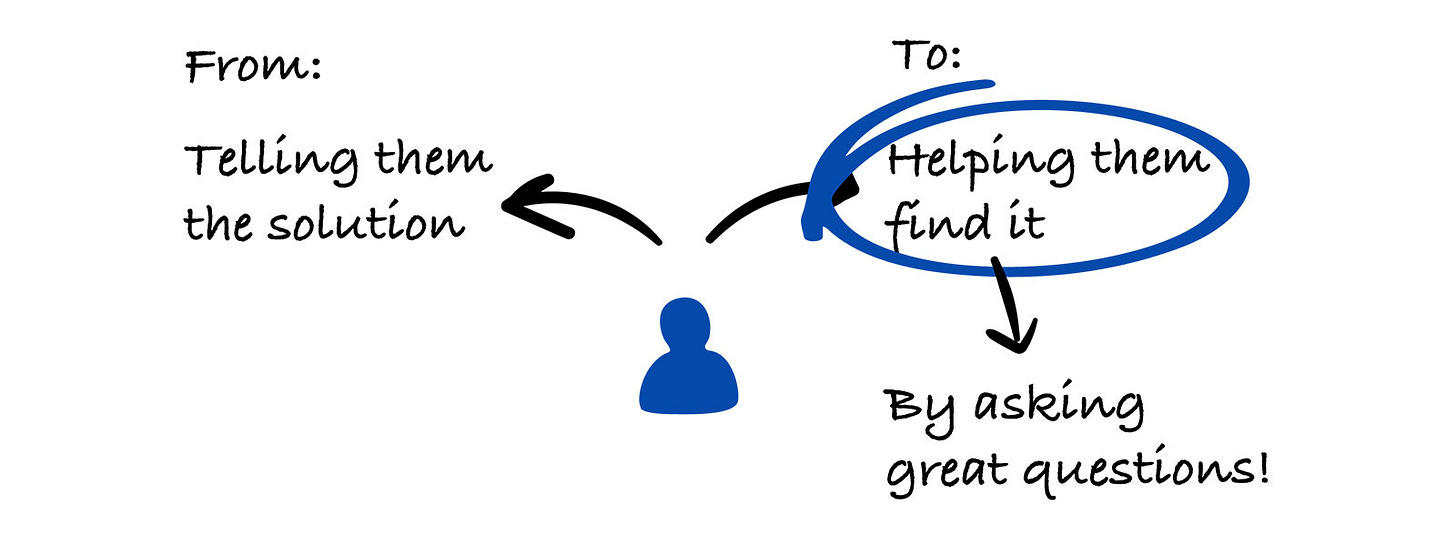Engineering Leader’s Guide: How to Become a Great Coach and Mentor
Being a great coach and mentor is crucial. Learn how to become one the RIGHT way!
Intro
One of the most important things a great engineering leader does is to create leaders.
And in order to do that, you need to become a great coach and mentor → to elevate everyone around you and help them grow.
You’ve probably had one or more managers in the past, who you don’t consider to be great managers → and the exact reason for that is that they weren’t leaders. They weren’t making everyone around them better through coaching and mentoring.
In order to have a great career as an engineering leader, it’s really important that you know and understand how to do coaching and mentoring the RIGHT way.
To help us with this, I am happy to bring in Andy Skipper as a guest author, who has been primarily focusing on coaching and mentoring for the past 9 years!
Let’s introduce our guest author for today’s article and get started.
Introducing Andy Skipper
Andy Skipper is the Founder and Chief Coach at CTO Craft, a community supporting thousands of CTOs and senior engineering leaders to thrive in their roles.
With over 20 years of experience leading technology at Made.com, Comic Relief, and startups, Andy now focuses on coaching and mentoring engineering leaders → helping them navigate the pressures, elevate their impact, and build stronger teams.
Today, he is kindly sharing his insights on what it takes to be a great coach and mentor as an engineering leader with us.
Let’s get straight into it!
1. The Evolution of Engineering Leadership
Remember the days when the path to becoming an engineering leader was simply a matter of being the best coder on the team?
We’d solve the most complex bugs, architect the most elegant systems, and our promotions felt like a natural extension of our technical prowess.
You were the hero who swooped in to save a failing sprint, the one everyone turned to when the documentation just didn’t make sense. And honestly, it felt great, didn’t it? Our value was tangible, measured in lines of code and solved tickets.
But somewhere along the way, the job changed.
The title shifted from “Senior Engineer” to “Engineering Leader,” and suddenly, the metrics that defined our success became less about what we did ourselves and more about what our teams accomplished.
It’s a tricky transition, one that often feels like trading a well-worn toolbox for a blank whiteboard. We were promoted for our technical skills, but the job now requires a completely different set of muscles:
communication,
empathy, and, most importantly,
the ability to build up the people around us.
I Tried to Do Everything Myself as a First-Time Engineering Leader
I was gifted my first proper leadership role in a very early-stage startup where I’d earned the trust of the other developers to write solid code, but also of the founders for my ability to translate their needs into priorities for the developers.
In my ignorance, I took that as an expectation that I could only be trusted if I personally owned the hardest parts of building the product, alongside keeping the project on track.
I completely neglected the need to manage the people as well, didn’t delegate or show them the trust they deserved, and I burned out.
I’d swapped their trust in me for distrust in them. A lesson that has never left me.
This is the fundamental shift we have to make. We’re no longer the star player; we’re the coach. Our primary job is no longer to be the smartest person in the room but to create an environment where everyone else can be their smartest.
It’s about moving away from “I’ll do it myself” to “How can I help you do this?” This is where the true art of leadership begins. It’s the journey from being a technical expert to becoming a strategic leader who builds not just products, but people.
Coaching versus Mentoring
Before we dive deep into today’s topic, it’s vital to understand the crucial difference between coaching and mentoring, two terms that are often mistakenly used interchangeably.
Think of it this way:
Coaching is generally short-term and task-oriented
It’s about helping someone solve a specific problem or acquire a particular skill by asking powerful questions and guiding them to their own answers.
Mentoring is a more long-term, relationship-based approach
It’s about sharing your own experiences, offering career advice, and providing a model for professional growth.
As a leader, you’ll need to know when to wear your coaching hat (asking, guiding) and when to put on your mentoring hat (advising, sharing). The best leaders are adept at both.
2. Why Coaching and Mentoring Are Non-Negotiable
So, we’ve established the shift from hero-engineer to strategic leader. Now, let’s talk about the “why.”
Why should you, an already busy engineering leader, invest so much time and energy into coaching and mentoring? Isn’t it enough to just manage projects and hit deadlines? The short answer is no, and here’s why.
Right now, we’re in a period of unprecedented employee turnover. Studies from major consulting firms show that nearly 40% of employees are looking to change roles.
That’s a staggering number, and the reasons for their departure are directly tied to leadership. Among the top reasons cited are:
Poor management or a bad experience with their direct manager. This is the number one reason people quit their jobs, and it is a direct reflection of a leader’s ability to engage and support their team.
Misalignment with company values or changes in company values. When leaders don’t embody and communicate the company’s mission effectively, employees feel adrift.
Lack of career growth or limited career progression opportunities. If an engineering leader isn’t actively mentoring their team and helping them see a path forward, they’ll look for one elsewhere.
Burnout and feeling undervalued or underappreciated. This is a symptom of a leadership style that focuses on tasks and output rather than on the people doing the work.
These findings aren’t just statistics; they are a direct challenge to the way we lead. They indicate that engineering leaders need to develop stronger coaching skills and become more intuitive when it comes to employee motivation and energy levels.
It’s no longer enough to be technically brilliant; you must be emotionally intelligent and deeply invested in the growth of your people.
By actively coaching and mentoring your team, you’re directly addressing these issues. You’re not just a manager; you’re a career partner. You help them navigate challenges, build new skills, and find their place within the company’s vision.
When a team member feels seen, supported, and challenged in a positive way, they’re less likely to look for opportunities elsewhere. Your investment in them becomes their reason to stay.
Ultimately, your most profound impact isn’t the code you write or the features you ship. It’s the people you help develop. The engineers you mentor today are the tech leads, managers, and directors of tomorrow.
By investing in them, you’re not just doing your job; you’re building a legacy that will outlast any specific project or product launch.
Coaching and mentoring are not just “nice-to-haves”; they’re the cornerstone of effective leadership and the key to building a high-performing, sustainable, and truly successful team.
3. The Mindset Shift
We’ve established the “why” → the immense value of coaching and mentoring for your team, your company, and your legacy. Now for the “how” → it all starts with a fundamental mindset shift.
This is the hardest part, the true challenge of moving from a technical expert to a leader of people. It’s the shift from being a “teller“ to being a “coach.”
The “telling” mindset is familiar and comfortable for most of us. A team member comes to you with a problem, and you give them the solution. They ask how to approach a task, and you provide a step-by-step guide.
We do this because it’s efficient, and we often genuinely believe we’re being helpful. After all, you have the experience, the answers, and the shortcuts. You can solve it faster than anyone else.
But what does this really teach your team? It teaches them to be dependent on you. It tells them that their job is to execute your instructions, not to think critically or solve problems for themselves.
The “coaching” mindset, on the other hand, is built on a simple yet powerful premise: asking powerful questions.
Instead of giving the answer, you guide the person to find it themselves. When a team member comes to you with a problem, your first instinct should no longer be to offer a solution. Instead, ask questions like:
“What have you already tried?”
“What do you think the core issue is here?”
“What are a few different ways you could approach this, and what are the pros and cons of each?”
“What resources or people do you think could help you find the answer?”
This Approach Can Feel Slow at First
It takes more time and patience than just blurting out the solution. But the long-term payoff is monumental.
When you ask powerful questions, you’re not just helping them solve the immediate problem; you’re teaching them a repeatable problem-solving process.
You’re building their confidence, their critical thinking skills, and their ability to become an independent and resourceful member of the team. This is the difference between giving a person a fish and teaching them how to fish.
This mindset shift is about letting go of the need to be the hero. It’s about empowering your team and believing in their ability to grow.
Your job isn’t to be the smartest person in the room; your job is to build a room full of smart, capable people.
Embracing this coaching mindset is the single most important step you can take on the journey to becoming a truly great leader.









